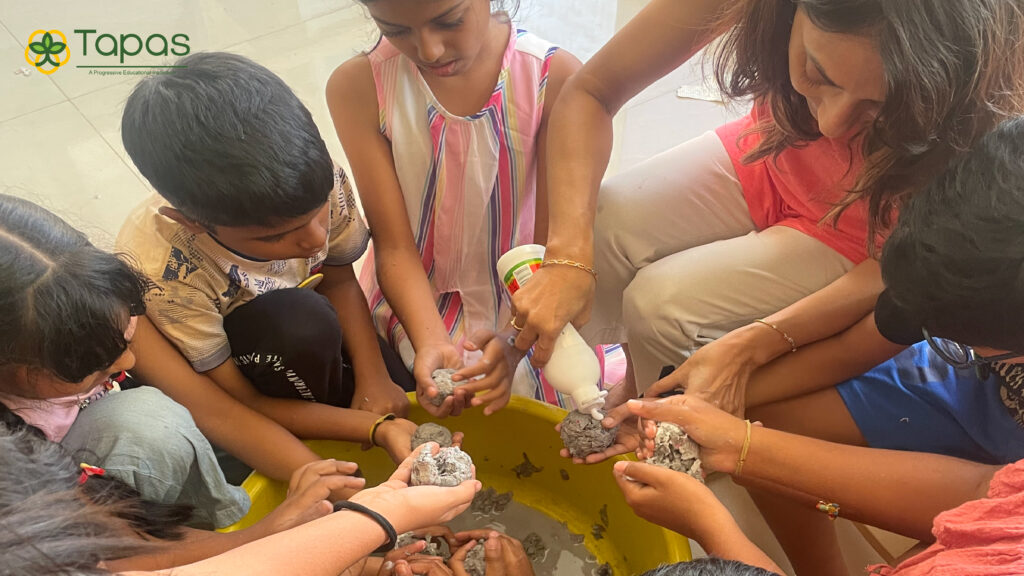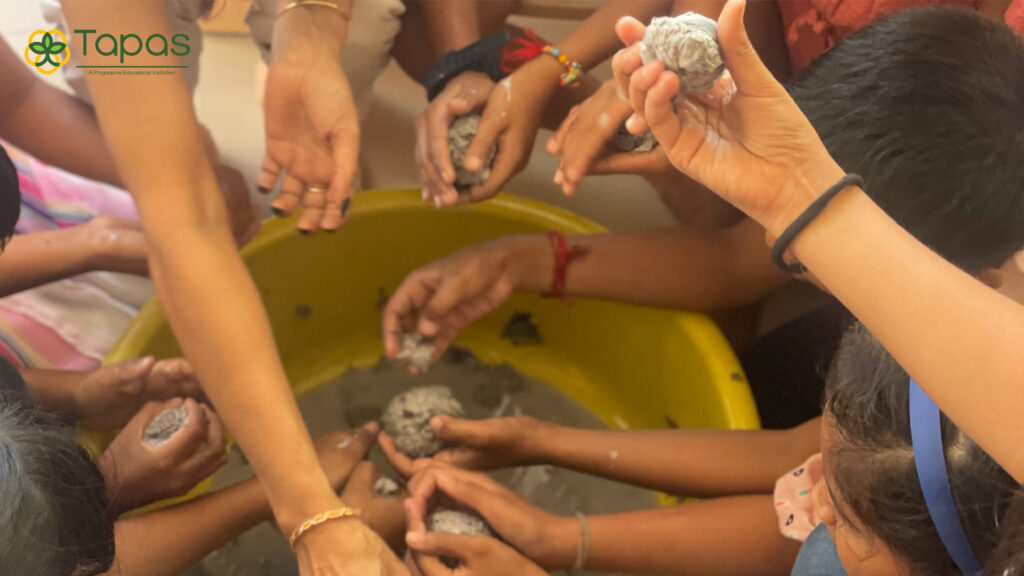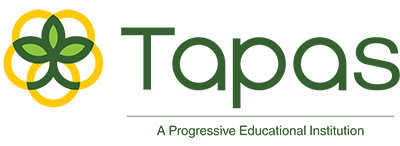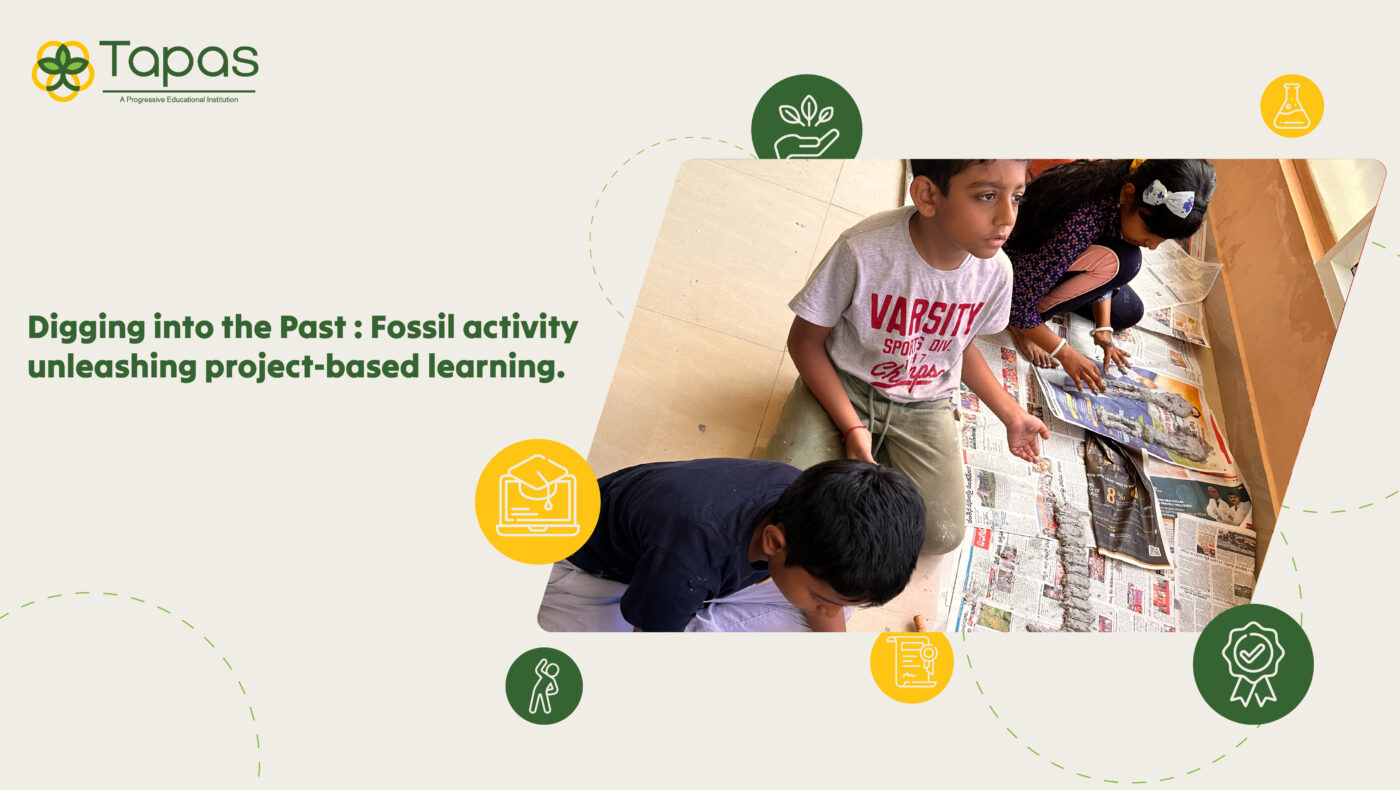Embark on a captivating journey of education and exploration as we delve into the realm of Fossil Activity, unlocking the boundless potential of project-based learning (PBL). Fossil Activity seamlessly integrates hands-on engagement with the rich world of Paleontology, fostering a dynamic learning environment for students. Through this innovative approach, learners are immersed in the process of discovery, uncovering ancient mysteries while simultaneously honing critical thinking skills. The synergy of Fossil Activity and Project-Based Learning goes beyond traditional teaching methods, providing a holistic educational experience that sparks curiosity and creativity. As we unearth the educational treasures within the fossil-themed projects, we invite educators, students, and enthusiasts to join us on this exciting adventure, where learning becomes an exploration of the past and a gateway to a future enriched with knowledge and discovery. Dive into the world of Fossil Activity, where each project is a stepping stone toward a more engaging and impactful educational experience.
The Joy of Hands-On Learning

Project-Based Learning (PBL) holds immense significance in education, offering a dynamic approach that goes beyond traditional methods. The joy and excitement experienced by young learners during hands-on activities within PBL catalyze enhanced learning. Engaging in tangible projects not only makes educational concepts more accessible but also sparks curiosity and creativity. The immersive nature of PBL fosters a deeper understanding of subjects by connecting theoretical knowledge with real-world applications. This joy-driven learning journey promotes critical thinking, collaboration, and problem-solving skills, laying a robust foundation for lifelong learning. Ultimately, hands-on experiences through PBL empower students to actively participate in their educational exploration.
Tactile Learning in Science Education
Tactile learning in science education, exemplified by the fossil activity, provides invaluable benefits by incorporating hands-on experiences. Creating trace fossils through stomping and pressing engages multiple senses, transforming abstract concepts into tangible understanding. This sensory-rich approach not only reinforces academic knowledge but also cultivates a deeper connection with the subject matter. The physical act of molding imprints stimulates touch, while the sounds of stomping and the visual observation of the creative process activate auditory and visual senses. Such multi-sensory engagement enhances retention, making the study of fossils a truly immersive and memorable experience, solidifying the foundational principles of science education.
Observing Scientific Processes
Observing scientific processes in a practical setting, a cornerstone of Project-Based Learning (PBL), is pivotal for cultivating a holistic understanding of concepts. The eagerness to witness the drying and hardening process, evident in PBL activities, mirrors a natural curiosity about scientific phenomena. This curiosity propels learners to explore cause-and-effect relationships, fostering a hands-on comprehension of theoretical principles. By immersing themselves in the tangible outcomes of scientific processes, students not only grasp the intricacies of the subject but also develop a lifelong appreciation for inquiry and experimentation. PBL thus nurtures a proactive engagement with learning, laying the foundation for future scientific exploration.
Creativity and Curiosity in Science

Creativity is a key element in science education, evident in the transformative impact of fossil activity. As children immerse themselves in the creative process of crafting trace fossils, their innate creativity is unleashed. This imaginative exploration not only results in unique artifacts but also sparks curiosity about the science behind fossils. The act of shaping imprints becomes a canvas for self-expression, fostering a dynamic learning environment. The fusion of creativity and scientific exploration in the fossil activity not only enhances understanding but also instills a profound joy in learning, creating a foundation for future scientific inquiry through the lens of imaginative engagement.
Comparative Analysis and Critical Thinking
- Critical Thinking in Project-Based Learning (PBL):
-
-
- PBL promotes critical thinking by encouraging students to engage in hands-on activities.
- The fossil activity serves as a PBL method, fostering a dynamic learning environment.
-
- Value of Comparative Analysis:
-
-
- Comparative analysis is a vital skill in developing a scientific mindset.
- It involves assessing similarities and differences to draw meaningful conclusions.
-
- Spontaneous Comparisons in the Fossil Activity:
-
-
- During the fossil activity, students spontaneously compared palm and foot imprints.
- This unplanned analysis initiated discussions among peers.
-
- Analytical Thinking Unveiled:
-
-
- The act of comparing sizes triggered analytical thinking among students.
- Analyzing variations in imprints prompted curiosity about individual differences.
-
- Discussion as a Learning Tool:
-
-
- Discussions arising from spontaneous comparisons create a collaborative learning atmosphere.
- Students engage in dialogue, enhancing their understanding through shared insights.
-
- Fostering Scientific Inquiry:
-
- Comparative analysis not only reinforces fossil-related concepts but also nurtures a scientific inquiry mindset.
- It encourages students to question, analyze, and seek explanations collaboratively.
Collaborative Learning in Archaeology
Importance of Collaborative Learning in Archaeology:
- Collaborative learning is crucial in archaeology as it mirrors the teamwork inherent in real archaeological endeavors.
- Archaeologists often collaborate to analyze findings, share insights, and construct a comprehensive understanding of historical contexts.
Trace Fossil Activity as Project-Based Learning (PBL):
- The trace fossil activity, designed as a PBL method, naturally fosters collaborative learning.
- Students engaged in creating trace fossils collaboratively, simulating the teamwork essential in archaeological excavations.
Promoting Collaboration Among Students:
- Crafting trace fossils requires a collective effort, encouraging students to share ideas and distribute tasks.
- Collaborative decision-making during the activity replicates the interdisciplinary nature of archaeological research.
Enhancing Learning through Collaboration:
- Collaborating on the trace fossil project enhances the learning experience as students pool their observations and interpretations.
- This collaborative approach not only reinforces fossil-related knowledge but also develops teamwork and communication skills.
Real-world Connection:
- The collaborative nature of the trace fossil activity reflects the authentic collaborative practices in archaeology.
- Students, through collaborative learning, gain insights into the communal and interdisciplinary aspects of archaeological work, preparing them for real-world applications in the field.
Reinforcing Scientific Concepts Through Art
Using Art and Hands-On Activities in Science Education:
Integrating art and hands-on activities into science education is a dynamic approach that enhances understanding and engagement. In the context of fossil activity, this combination becomes a powerful tool for reinforcing scientific concepts.
Fossil Activity as Project-Based Learning (PBL):
The fossil activity is structured as a Project-Based Learning (PBL) experience, aligning education with real-world applications. PBL encourages students to explore, create, and collaborate, fostering a deeper comprehension of scientific principles.
Multisensory Engagement:
Art and hands-on activities engage multiple senses, making the learning experience more immersive and memorable. In the creation of trace fossils, students utilize touch, sight, and even hearing as they stomp and press, connecting theoretical knowledge to sensory exploration.
Tangible and Memorable Learning:
The creation of trace fossils serves as a tangible and memorable reinforcement of students’ understanding of fossils. The physical act of molding imprints transforms abstract concepts into concrete artifacts, providing a hands-on encounter with the processes involved in fossil formation.
Bridging Creativity with Science:
Artistic expression through trace fossils not only reinforces scientific knowledge but also bridges the gap between creativity and science. Students engage in a creative process while simultaneously gaining a deeper appreciation for the scientific principles underpinning fossilization.
Holistic Learning Experience:
The fossil activity creates a holistic learning experience by combining artistic expression with scientific exploration. It goes beyond traditional teaching methods, encouraging students to think critically, collaborate, and appreciate the interconnectedness of art and science.
Real-World Application:
By simulating the creation of trace fossils, students gain insights into the practical aspects of paleontology. This hands-on experience prepares them for real-world applications, fostering a lifelong curiosity about the natural world and the scientific processes that shape it.
Wrapping up….
In conclusion, the fossil activity exemplifies the transformative power of Project-Based Learning (PBL) in science education. Through hands-on engagement and artistic expression, students reinforced their understanding of fossils and cultivated critical thinking and collaboration. This immersive experience, structured as a PBL initiative, seamlessly integrated the creative process with scientific exploration, creating a holistic learning journey. As we celebrate the success of this educational endeavor, we invite you to explore more innovative approaches at TapasEducation.com. Embrace the potential of PBL to ignite curiosity, foster creativity, and shape the future minds of our budding scientists. Join us on the journey of discovery and hands-on learning for a brighter educational landscape.

